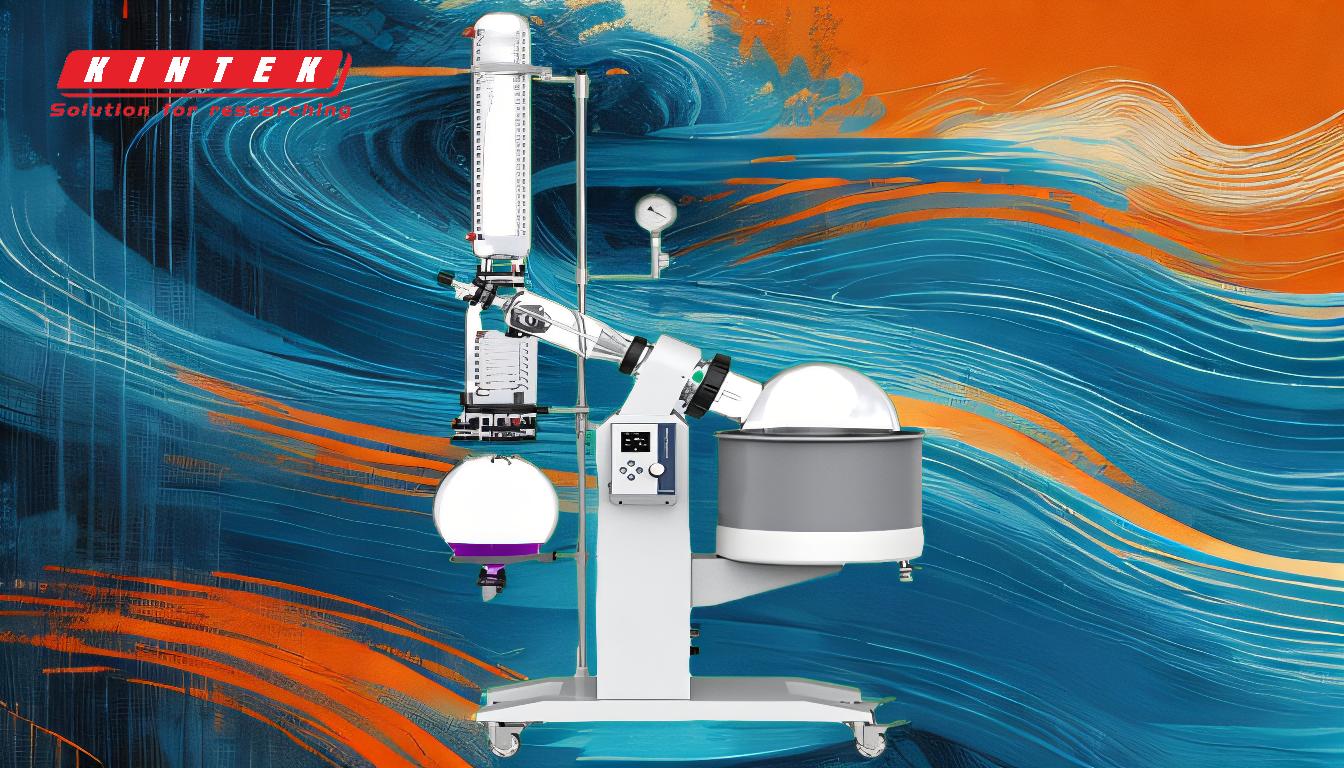Rotary evaporation (rotovap) and standard distillation are both techniques used to separate components of a mixture, but they differ significantly in their mechanisms, applications, and outcomes. Rotovap operates under reduced pressure, allowing for lower boiling points and gentler separation of compounds, making it ideal for delicate substances like food flavors and essences. In contrast, standard distillation often involves higher temperatures, which can alter or degrade sensitive compounds. Rotovap also offers faster and more efficient distillation due to increased surface area and continuous mixing, while standard distillation focuses on collecting the distillate rather than the residue.
Key Points Explained:

-
Temperature Control and Pressure:
- Rotovap: Operates under vacuum conditions, which significantly lowers the boiling point of solvents. This allows for distillation at much lower temperatures, preserving the integrity of heat-sensitive compounds like flavors, essences, and other delicate substances.
- Standard Distillation: Typically operates at atmospheric pressure, requiring higher temperatures to achieve boiling. This can lead to thermal degradation or alteration of sensitive compounds, making it less suitable for delicate materials.
-
Mechanism of Separation:
- Rotovap: The rotating flask increases the surface area of the mixture, promoting faster and more even evaporation. The vacuum ensures that solvents evaporate at lower temperatures, and the system is designed to recover nearly 100% of the solvent. The residue (concentrated compound) remains in the original flask.
- Standard Distillation: Relies on heating the mixture to boiling, followed by condensation of the vapor. The distillate (collected solvent) is the primary product, and the process is less efficient for recovering solvents or preserving heat-sensitive compounds.
-
Applications:
- Rotovap: Ideal for applications requiring the preservation of delicate compounds, such as in the food, beverage, and pharmaceutical industries. It can separate liquids from solids, remove tannins, and eliminate undesirable elements like color or bitterness while retaining full flavor profiles.
- Standard Distillation: Commonly used in industries where thermal stability of compounds is not a concern, such as petroleum refining or alcohol production. It is less suitable for applications requiring the preservation of heat-sensitive materials.
-
Efficiency and Speed:
- Rotovap: The combination of vacuum, rotation, and increased surface area makes the process faster and more efficient. Continuous mixing ensures even heating and evaporation, reducing the risk of localized overheating.
- Standard Distillation: Generally slower and less efficient, especially for recovering solvents or separating delicate compounds. The process can be time-consuming and may require higher energy input.
-
Outcome of the Process:
- Rotovap: Focuses on retaining the residue (concentrated compound) in the original flask, making it ideal for concentrating solutions or isolating specific compounds without altering their properties.
- Standard Distillation: Focuses on collecting the distillate (solvent) as the primary product, which may not be suitable for applications where the residue is the desired outcome.
-
Precision and Control:
- Rotovap: Offers precise control over the distillation process, including temperature, pressure, and rotation speed. This allows for tailored separation of components and minimizes the risk of damaging sensitive compounds.
- Standard Distillation: Provides less control over the process, particularly in terms of temperature and pressure, which can lead to less predictable outcomes, especially with delicate materials.
In summary, the rotovap is a more advanced and specialized form of distillation, designed for applications requiring gentle separation and preservation of delicate compounds. Standard distillation, while effective for many industrial processes, lacks the precision and gentleness needed for heat-sensitive materials. The choice between the two depends on the specific requirements of the application, including the nature of the compounds being separated and the desired outcome.
Summary Table:
| Aspect | Rotary Evaporation (Rotovap) | Standard Distillation |
|---|---|---|
| Temperature & Pressure | Operates under vacuum, enabling lower boiling points and preserving heat-sensitive compounds. | Operates at atmospheric pressure, requiring higher temperatures, risking thermal degradation. |
| Mechanism | Rotating flask increases surface area; vacuum ensures efficient solvent recovery. | Relies on heating to boiling, followed by condensation; less efficient for solvent recovery. |
| Applications | Ideal for delicate compounds in food, beverage, and pharmaceutical industries. | Used in industries like petroleum refining and alcohol production. |
| Efficiency & Speed | Faster and more efficient due to vacuum, rotation, and increased surface area. | Slower and less efficient, especially for delicate compounds. |
| Outcome | Focuses on retaining residue (concentrated compound) in the flask. | Focuses on collecting distillate (solvent) as the primary product. |
| Precision & Control | Offers precise control over temperature, pressure, and rotation speed. | Provides less control, leading to less predictable outcomes with sensitive materials. |
Need help choosing the right distillation method for your application? Contact our experts today!









